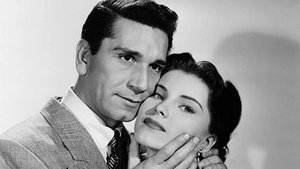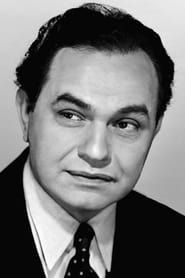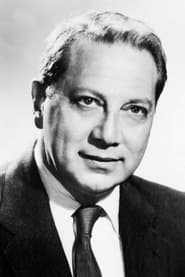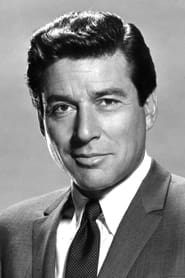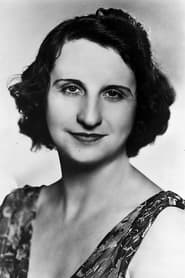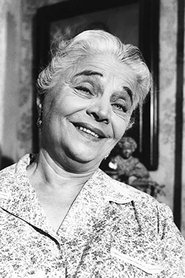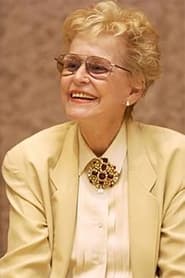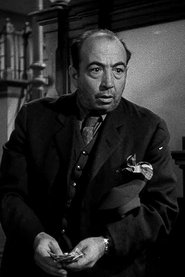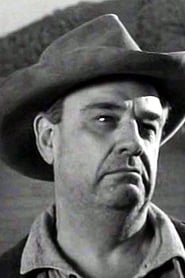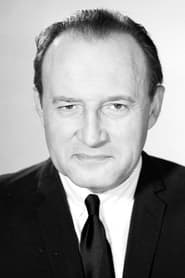Cast
View AllEdward G. Robinson
as Gino Monetti
Susan Hayward
as Irene Bennett
Richard Conte
as Max Monetti
Luther Adler
as Joe Monetti
Paul Valentine
as Pietro Monetti
Efrem Zimbalist Jr.
as Tony Monetti
Debra Paget
as Maria Domenico
Hope Emerson
as Helena Domenico
Esther Minciotti
as Theresa Monetti
Diana Douglas
as Elaine Monetti
Tito Vuolo
as Lucca
Fred Aldrich
as Construction Worker (uncredited)
Maxine Ardell
as Chorus Dancer (uncredited)
Al Bain
as Fight Spectator (uncredited)
David Bauer
as Prosecutor (uncredited)
Crew
Director
- Joseph L. Mankiewicz
Writer
- Philip Yordan
Producer
- Sol C. Siegel
Reviews
John Chard
It's still being done you know, outside the jungle.
House of Strangers is directed by Joseph L. Mankiewicz and adapted to screenplay by Phillip Yordan from Jerome Weidman's novel I'll Never Go There Any More. It stars Edward G. Robinson, Susan Hayward, Richard Conte, Luther Adler, Paul Valentine and Efrem Zimbalist. Plot finds Robinson as Gino Monetti, an Italian American banker who whilst building up the family business has ostracised three of his four sons. When things go belly up for Gino and the bank, the three sons turn against their father, the other, Max (Conte), stays loyal but finds himself set up for a prison stretch. Untimely since he's started to fall in love with tough cookie Irene Bennett (Hayward).
Jerome Weidman's novel has proved to be a popular source for film adaptation, after this 20th Century Fox produced picture came the Western version with Broken Lance in 1954 (Yordan again adapting), and then Circus set for The Big Show in 1961. While its influence can be felt in many other, more notable, crime dramas along the way. The divided clan narrative provides good basis for drama and lets the better actors shine on the screen with such material. Such is the case with House of Strangers, which while hardly shaking the roots of film noir technically, does thematically play out as an engrossing, character rich, melodrama.
Propelled by a revenge core peppered with hate motives instead of love; and dabbling in moral ethics et al, Mankiewicz spins it out in flashback structure. The primary focus is on Max and Gino, with both given excellent portrayals by Conte and Robinson. Gino is a driven man, very dismissive towards three of his boys (Adler standing out as Joe) who he finds easy to find fault with. But Max is spared the tough love, Gino admires him and sees him very much as an equal, which naturally irks the other brothers something rotten. This all comes to a head for the final quarter where the pace picks up and the tale comes to its prickly, if not completely satisfactory, ending.
In the mix of family strife we have been privy to Max's burgeoning relationship with Irene (Hayward sassy), which positively simmers with sexual tension, or maybe even frustration? This in spite of the fact he is engaged to be married to the homely innocent Maria (Debra Paget). So with dad Gino proving to be, well, something of an ungrateful bastard, and Max cheating on his intended, clearly this is not a film about good old family values coming to the fore! Then there's the small matter of brother betrayal and the case of the foolish decision making process, all elements that keep the viewer hooked till the last. 7/10
Dec 13, 2018
Thematic Analysis
As a dramatic work, House of Strangers examines complex human relationships and emotional struggles against the backdrop of a period setting that reflects societal issues of its time. The character development particularly stands out, offering viewers a chance to reflect on their own life journeys.
Director Joseph L. Mankiewicz brings their distinctive visual style to this film, continuing their exploration of themes seen in their previous works while adding new elements. Their approach to character development and emotional depth creates a viewing experience that rewards close attention.
Released in 1949, the film exists within a cultural context that now offers viewers historical perspective on the social issues of that era. Its reception demonstrates the diverse reactions to its artistic choices and its place in cinema history.
Did You Know?
- The production of House of Strangers took approximately 4 months from pre-production to final cut.
- The final cut of the film runs for 101 minutes, though the director's initial assembly was reportedly 126 minutes long.
- The director insisted on using practical effects whenever possible, reserving CGI for only the most necessary scenes.
- The costume department created over 495 unique costume pieces for the production.
- Several scenes were filmed in multiple locations to capture the perfect setting.
Historical Context
- In 1949, when this film was released:
- Television was becoming a dominant form of home entertainment.
- The civil rights movement was gaining momentum in the United States.
- The film industry was dominated by major studios, with independent cinema still in its early development.
How This Film Stands Out
While House of Strangers shares thematic elements with other films in its genre, it distinguishes itself through its unique approach to storytelling, visual style, and character development.
Unlike 2gether: The Movie, which takes a more conventional approach to its subject matter, House of Strangers subverts genre expectations by exploring its themes with greater nuance.
While films like Little Siberia and The Funeral explore similar territory, House of Strangers stands apart through its deeper exploration of its central themes and more complex characterization.
This film's unique contribution to cinema lies in its thoughtful balance of entertainment value and thematic depth, making it a valuable addition to its genre.
Details
- Release Date: July 1, 1949
- Runtime: 1h 41m
